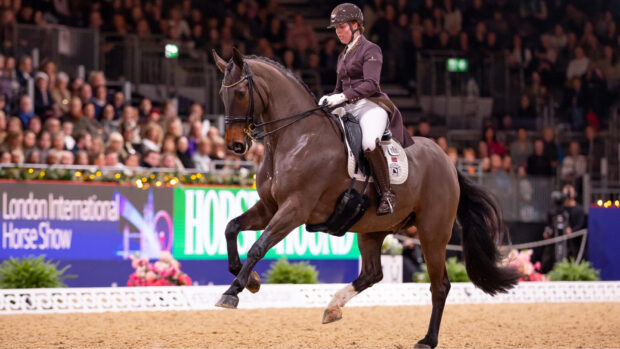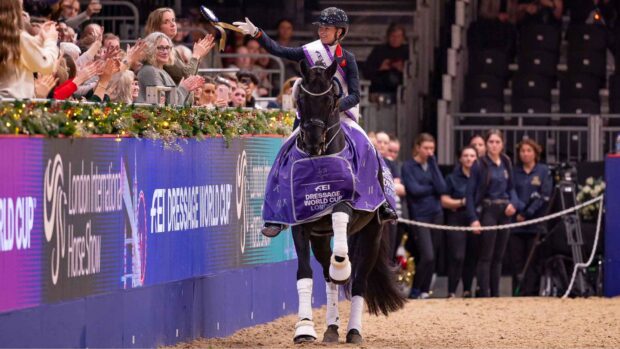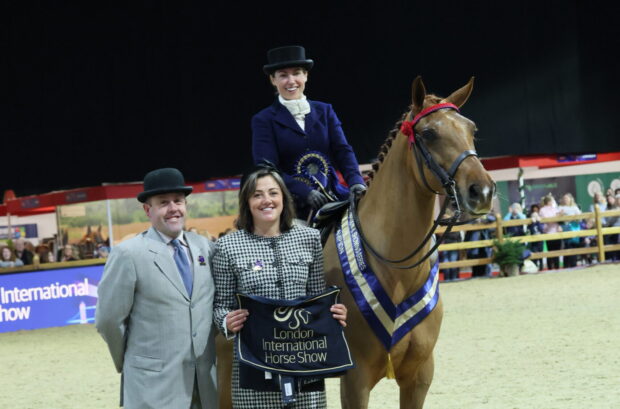Horse welfare and audience engagement are the main reasons behind piloting a shortened grand prix test at Olympia World Cup qualifier (17 December).
The grand prix, which decides the starting order for the following night’s grand prix freestyle, but does not serve as the World Cup qualifier itself, will be shortened by 45 seconds to five minutes.
Richard Davison, Olympia’s dressage consultant, told H&H that the changes promote horses’ mental and physical welfare by minimising repetition of movements within the floorplan, and the length of time a horse is required to sustain a movement.
“Is it really necessary that, every time a grand prix horse competes at an FEI competition he performs the lengthy grand prix, the same test as at the Olympics? You wouldn’t subject a showjumper to an Olympic-standard course at every competition,” Richard said.
In the new floorplan, which was released on 10 October, riders will perform the piaffe twice, rather than three times, although 12-15 steps is still required for each. Extended trot features just once rather than three times — but will receive a double coefficient unlike in the full length grand prix — and the trot half-passes are shorter. The canter zig-zag has been removed, with canter half-passes instead featuring before and between the two pirouettes and the rein-back has been removed from the routine altogether.
“I don’t think we need to be testing absolutely everything, multiple times, in one test, especially with the freestyle the following night,” Richard said.
“The test might look easier on paper, but it adds challenge for the rider because they won’t have a chance to repeat a movement if they make a mistake. It will require more precision and preparation.
“We’ve based the movements on recognised horse learning techniques,” he added. “For example the two sets of changes are on the same rein as in the grand prix — the two-times off the left rein, the one-times off the right — and kept the number of changes the same.
“I want to test riders, but not confuse horses.”
‘We must question existing practices’
Another change to be piloted at Olympia is the introduction of short rider interviews directly following each test, while still mounted in the arena. The interviews are expected to last no longer than 45 seconds each and Richard emphasised that these will not have a negative impact on the rider’s ability to cool their horse down sufficiently following the test.
“One of the most important things to do after a test in a hot indoor environment is to bring the horse’s temperature down,” says Richard. “This isn’t achieved by immediately trotting the horse on a long rein, which maintains temperature, but by actually stopping and getting the horse cool.”
Continues below…

Radical new dressage scoring system proposed
Developers believe the system could make marks higher, fairer and more accurate

FEI proposes dressage judging changes for fairer sport
Olympic and World Equestrian Games dressage tests could be marked by a panel of seven judges and a new supervisory

How’s my judging? Survey asks for riders’ feedback
The judge hopes colleagues will use her survey to gather competitors' opinions
The Olympia grand prix will also be ridden to music, selected for each rider by a musical director, and riders will remain in the arena after their tests to see the judges’ scores as soon as they appear. Despite the changes, the shortened grand prix will be the ridden and judged in exactly the same way as all other FEI tests, and no changes will be made to the freestyle test, which serves as the World Cup qualifier.
“If we want to improve the dressage sport we have to question existing practices and try new and better ways of doing things,” said Richard. “This is a pilot class and hopefully it will lead to other innovation. I think the FEI and organising committee should be congratulated as mental and physical horse welfare can only be improved by this move.”
For more on the changes and rider reactions, don’t miss this week’s H&H magazine, out 11 October.




